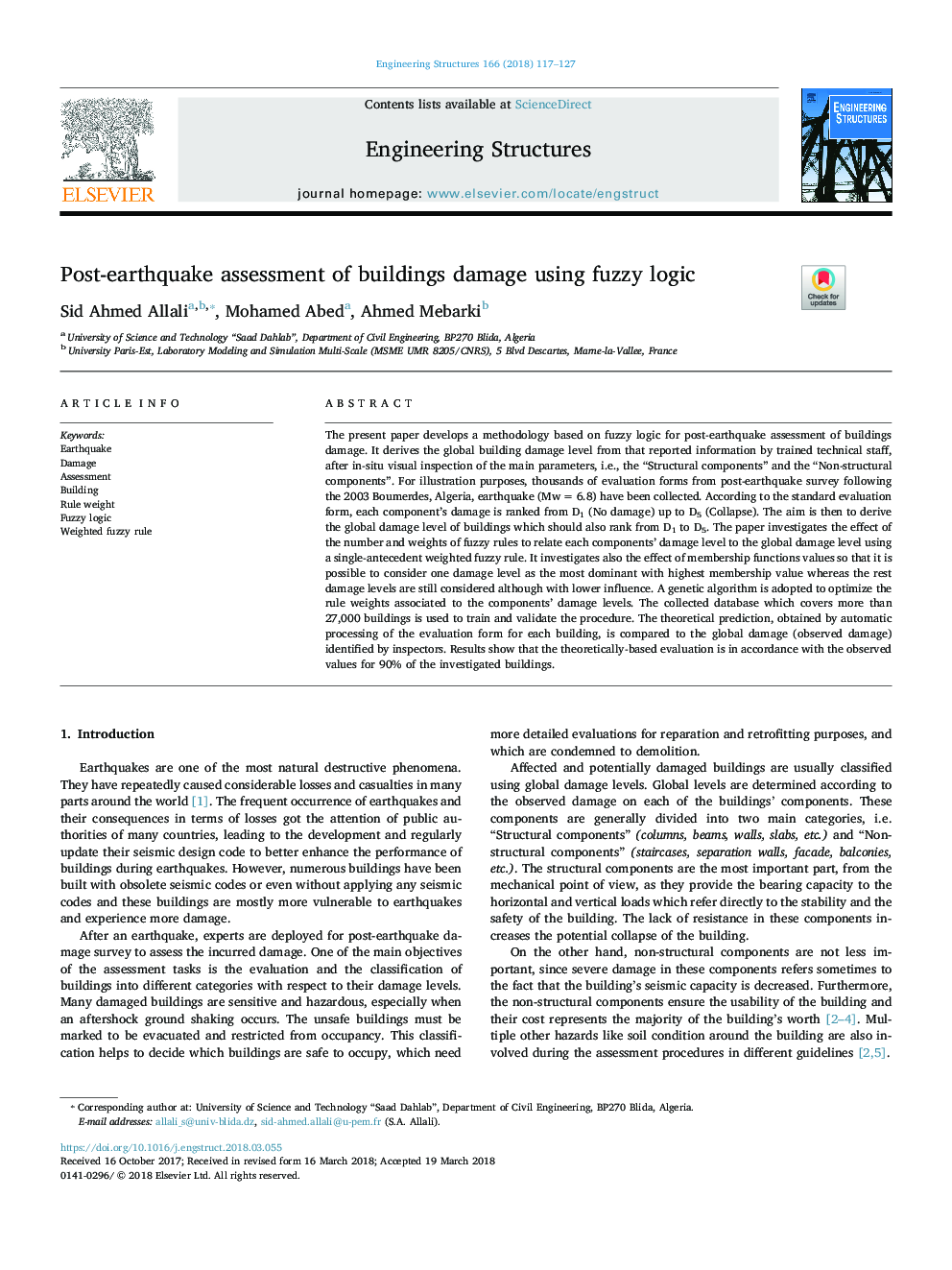| Article ID | Journal | Published Year | Pages | File Type |
|---|---|---|---|---|
| 6737434 | Engineering Structures | 2018 | 11 Pages |
Abstract
The present paper develops a methodology based on fuzzy logic for post-earthquake assessment of buildings damage. It derives the global building damage level from that reported information by trained technical staff, after in-situ visual inspection of the main parameters, i.e., the “Structural components” and the “Non-structural components”. For illustration purposes, thousands of evaluation forms from post-earthquake survey following the 2003 Boumerdes, Algeria, earthquake (Mwâ¯=â¯6.8) have been collected. According to the standard evaluation form, each component's damage is ranked from D1 (No damage) up to D5 (Collapse). The aim is then to derive the global damage level of buildings which should also rank from D1 to D5. The paper investigates the effect of the number and weights of fuzzy rules to relate each components' damage level to the global damage level using a single-antecedent weighted fuzzy rule. It investigates also the effect of membership functions values so that it is possible to consider one damage level as the most dominant with highest membership value whereas the rest damage levels are still considered although with lower influence. A genetic algorithm is adopted to optimize the rule weights associated to the components' damage levels. The collected database which covers more than 27,000 buildings is used to train and validate the procedure. The theoretical prediction, obtained by automatic processing of the evaluation form for each building, is compared to the global damage (observed damage) identified by inspectors. Results show that the theoretically-based evaluation is in accordance with the observed values for 90% of the investigated buildings.
Related Topics
Physical Sciences and Engineering
Earth and Planetary Sciences
Geotechnical Engineering and Engineering Geology
Authors
Sid Ahmed Allali, Mohamed Abed, Ahmed Mebarki,
